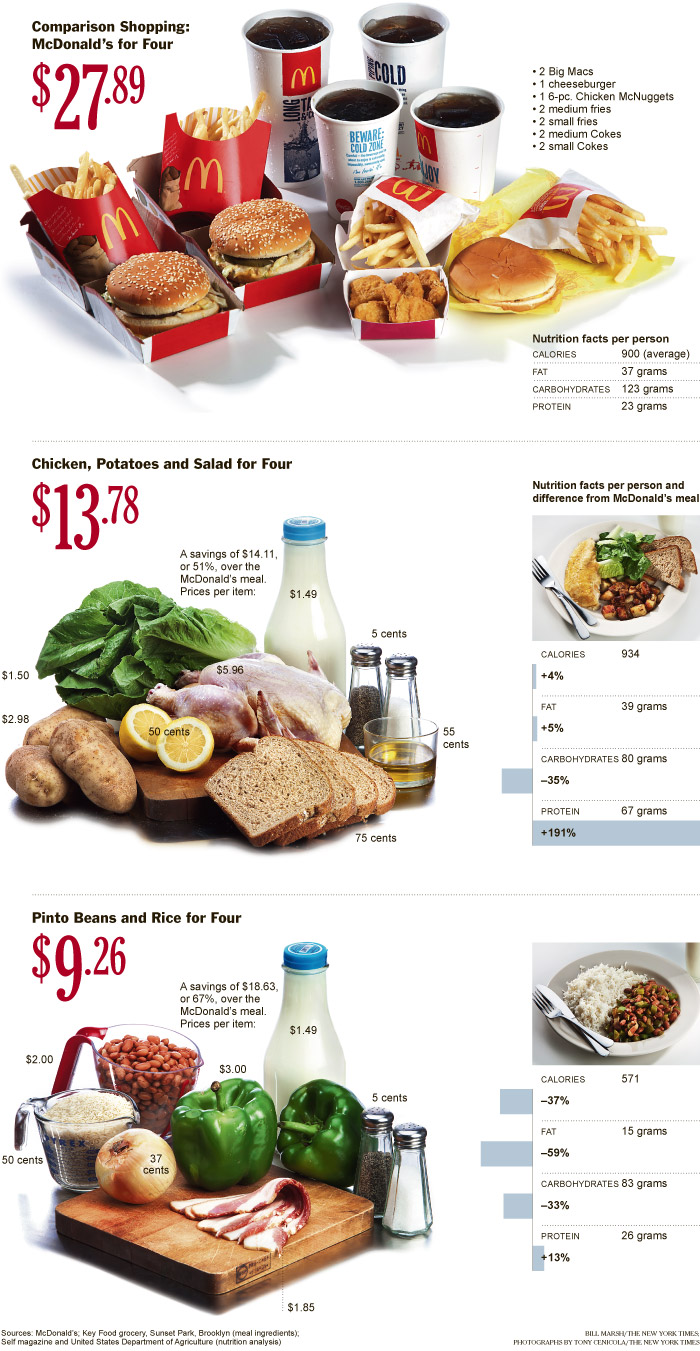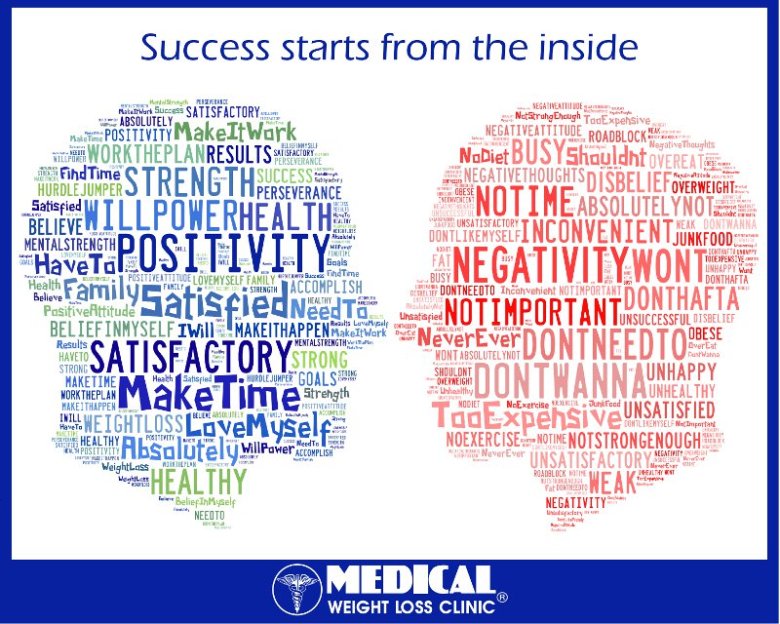Sitting is KILLING you – The truth about sitting down
July 12, 2012 — Medical Weight Loss ClinicSuccess Starts from the Inside
July 9, 2012 — Medical Weight Loss ClinicHow to get your Daily Updates from MWLC’s Pocket Coach on your phone
January 11, 2012 — Medical Weight Loss Clinic
Medical Weight Loss Clinic’s Pocket Coach
Everyone needs a little reminder or positive motivation from time to time. Sometimes the simple things can make a huge difference. Medical Weight Loss Clinic now has Pocket Coach which provides daily motivation, health and exercise tips twice a day via a text message on your mobile phone.
To get started:
- You need a phone that receives texts
- You need to have your texting service Enabled by your mobile service provider.
- Text “follow mwlc” to 40404 (Some users may have to type “follow @mwlc”)
- You will receive a verification message (varies depending on your service)
NOTE: In order to send text messages to a subscriber list, we need to utilize a service with the necessary capability. We use Twitter’s “Fast Follow” to send these text messages to your phone. You do not need to have an online Twitter account or Twitter app to utilize this service. You will receive these texts as you do any other text.
FEE: You will be charged for ANY text sent to your phone in accordance to your texting package provided to you by your mobile phone service provider. We do not charge an additional fee.
How to discontinue the service:
- Sending STOP twice in succession will remove your phone number from the list. You will no longer receive updates from us.
- You can send Follow mwlc anytime and start receiving updates again!
Screen Shot Examples
(click to enlarge)
Metro Detroit Mall Walking Guide
September 29, 2011 — Medical Weight Loss ClinicEASTLAND MALL
Location: 18000 Vernier Road (Eight Mile Rd.) west of I-94
City: Harper Woods
Doors Open: 8 a.m. Monday through Sunday
Distance: One lap is one mile.
Phone: (313) 371-1500
FAIRLANE TOWN CENTER
Location: 8900 Michigan Avenue and Southfield Expressway
City: Dearborn
Doors open: 7 a.m. Monday through Sunday
Distance: One lap of complete lower level including arcades is .8 of a mile.
Phone: (313) 593-3330
GREAT LAKES CROSSING
Location: Baldwin Road and 1-75, Exit 84
City: Auburn Hills
Doors open: 7 a.m. Monday through Sunday
Distances: If you follow the track, one lap is .8 of a mile. If you follow the outside perimeter to the doors, one lap is 1.2 miles.
Phone: (248) 454-5000 or 1-877-SHOPGLC
Additional: New Michigan Adventure Walking Club! Get a t-shirt just for registering. Member
benefits include FREE quarterly breakfast and daily health tips.
Web address: http://www.shopgreatlakescrossing.com/infodesk/clubNews.html
LAKESIDE MALL
Location: Hall Road (M-59) and Schoenherr; Sterling Heights
Dooxz ances: One lap on the lower level is .75 of a mile. One lap on the 2nd level, including the food court, is about one mile.
Phone: (586) 247-1590
Additional: There is a coat rack available from 8 a.m. to 10 a.m. located in the lower level JC Penney Wing.
LAUREL PARK PLACE
Location: Six Mile Road (1/4 mile east of I-275); Livonia
Doors open: 7 a.m. Monday through Saturday, 7 a.m. on Sunday
Distance: One lap (inside perimeter of the shopping center – maroon tile) is .6 of a mile.
Phone: (734) 462-1100
Additional: Mall walking club sponsored by St. Mary Mercy Hospital. Free blood pressure screenings every 4th Monday of the month from 8 a.m. to 10 a.m. in Center Court of mall.
LIVONIA MALL
Location: 29514 Seven Mile Road and Middlebelt Road; Livonia
Doors open: 7 a.m. Monday through Saturday, 9 a.m. on Sunday
Distances: One lap including the arcades is approximately one mile.
Phone: (248) 476-1160
Additional: Use entrance by Mervyn’s. Botsford Hospital conducts blood pressure screenings on the 3rd Wednesday of each month.
MACOMB MALL
Location: Masonic (13-1⁄2 Mile) and Gratiot; Macomb
Doors open: 7 a.m. Monday through Saturday, 9 a.m. on Sunday
Distances: One lap is .8 of a mile.
Phone: (586) 293-7800
Additional: Use the entrance near the mall office (between Silver Cinemas and Kohl’s). Pick up a registration form at either the Customer Service Center or Security Office.
NORTHLAND MALL
Location: John C. Lodge Freeway and Greenfield; Southfield
Doors open: 8 a.m. Monday through Saturday, 10:30 a.m. on Sunday
Distances: One lap of the internal perimeter, including arcades is about 1 mile.
Phone: (248) 569-6272
Additional: Mall walking club, Northland Pacers. Use entrance near T.J. Maxx
OAKLAND MALL
Location: 14 Mile Road and John R Road; Troy
Doors open: 7 a.m. Monday through Saturday, 8 a.m. on Sunday
Distances: The upper level and lower level of Oakland Mall are .2 of a mile each, the main level is .6 of a mile. Circle the outside perimeter of all three levels to complete a one-mile walk.
Phone: (248) 585-6000
Additional: Register to walk at the lower level information desk during mall hours. Before regular hours, use the main entrance and Steve and Barry’s entrance.
Web address: www.oaklandmall.com/mallwalkers.shtml
SOMERSET MALL
Location: Big Beaver and Coolidge Roads; Troy
Doors open: 7 a.m. Monday through Sunday
Distances: Once around any level at North equals about .3 of a mile. Once around any level at South equals a little over .25 of a mile. One way across the Skywalk equals .125 of a mile.
Phone: (248) 643-6360
Additional: Call the phone number above to get a parking sticker. Park on level 3 behind Neiman-Marcus. Mall walking club, the Sky Walker Club meets on the 3rd Wednesday each month from October 20 – April 20 from 8 – 9:30 a.m. – check in at Starbucks South
SOUTHLAND MALL
Location: 2300 Eureka Road (1/4 mile east of Telegraph); Taylor
Doors open: 7:30 a.m. Monday through Saturday, 9:30 a.m. on Sunday
Distances: The entire mall perimeter is just over one mile.
Phone: (734) 374-2800, ext. 7023
Additional: Use entrance closest to Marshall Field’s (when looking at Marshall Field’s it is the door to the left). Identification is required.
SUMMIT PLACE MALL
Location: 315 N. Telegraph Road; Pontiac
Doors open: 7 a.m. Monday through Sunday
Distances: One lap is approximately one mile.
Phone: (248) 682-0123
TWELVE OAKS MALL
Location: 27500 Novi Road (just north of 1-96); Novi
Doors open: 8 a.m. Mondays through Saturdays, 9 a.m. on Sundays
Distances: One lap of the upper level is approximately .8 of a mile. One lap of the lower level is approximately .5 of a mile.
Phone: (248) 348-9400
Additional: Use the Lord & Taylor entrance (Valet entrance). Register at Main Information Desk.
WESTLAND MALL
Location: Wayne and Warren Roads; Westland
Doors open: 7 a.m. Monday through Sunday
Distances: Walking the mall with all the arcades (hallways) is .75 of a mile. Walking the mall without all arcades (hallways) is .5 of a mile.
Phone: (734) 425-5001
Additional: Use the doors by Arcade 2 (by Olga’s Kitchen) before 8:30 a.m. To join the walking program, complete a registration card at the Customer Service booth in the East Court. St. Mary Mercy Hospital offers community lectures and health screenings such as blood pressure checks.
Web address: www.westlandcenter.com
Note: Information in this guide is subject to change. Please contact the mall to confirm program information.
Source: Health Alliance Plan of Michigan
What’s motivation got to do with weight loss?
July 21, 2011 — Medical Weight Loss ClinicSt. Louis, MO, April 26, 2010 – Energy in, energy out, it’s the basic equation to weight loss, or is it? With more than two thirds of Americans classified as overweight or obese1, a study in the May/June 2010 issue of the Journal of Nutrition Education and Behavior examines how motivation might be a large contributor to sticking with weight loss programs.
Researchers at the University of Kentucky and University of North Carolina at Chapel Hill examined two types of motivation, autonomous and controlled, and their relationship to adherence and weight loss in a 16-week Internet weight-loss intervention. To measure the 2 types of motivation, a Treatment Self-Regulation Questionnaire was used to identify those participants motivated by intrinsic and extrinsic controls such as feeling that performance is the best way to help oneself and making changes for personal reasons (autonomous motivation) and those participants motivated by only external controls such as perceived pressure from others and feelings of guilt (controlled motivation). Motivation for weight loss was measured at baseline and 4, 8, 12, and 16 weeks. In addition, study participants recorded their food intake, exercise, and body weight through an on-line self-monitoring system weekly throughout the study.
Over half of the participants (37 of 66) lost 5% of initial body weight at the 16-week follow-up. To examine the relationship between the 2 different types of motivation and weight loss, the sample was divided into those who had and those who had not lost 5% of initial body weight by 16 weeks (37 and 29 participants, respectively). The researchers found that the majority of participants had a significant increase in autonomous and controlled motivation between baseline and 4 weeks, though it’s not clear what caused the increase in motivation at 4 weeks, the face-to-face session given at the start of the study, early success with weight loss, or something else. Although motivation increased initially for most participants, the group that went on to achieve a 5% weight loss sustained their autonomous motivation between 4 and 16 weeks, while the group that was less successful experienced a significant decrease in autonomous and controlled motivation over time.
The authors also found that autonomous motivation at 4 weeks was a significant predictor of adherence to self-monitoring and weight loss. Furthermore, this increase in self-monitoring appeared to be a way in which autonomous motivation led to better weight loss. The authors found a positive correlation between weight loss at 4 weeks and higher levels of autonomous motivation especially when compared to participants who had higher levels of controlled motivation. .
Writing in the article, the authors state, “It appears that the time period between 4 and 8 weeks may be an important window for weight control programs to consider using techniques designed to enhance autonomous motivation, including giving more intense support or different types of interventions, such as activities to enhance autonomous motivation or contact from a weight-loss counselor in the form of e-mails, phone calls, or face-to-face meetings.”
“It is possible that motivation measured a few weeks after the study has begun more accurately captures motivation than baseline motivation for weight loss since participants have become familiar with the behavior changes that will be necessary for weight loss and can better gauge their motivation for making those changes.”
“These findings suggest that building motivation may be an effective means of promoting adherence and weight loss.”
Source: Elsevier Health Sciences
Short periods of excercise may improve mood
July 21, 2011 — Medical Weight Loss ClinicExercising even for a short period each day may improve mood, suggest the results of a pilot study of female college students.
“These results offer initial and tentative guidelines for the prescription of aerobic exercise toward the enhancement of psychological health,” says lead author Cheryl J. Hansen, of the department of psychology at Northern Arizona University.
Once a week for four weeks, 14 study participants engaged in one of four activities: pedaling at a moderate pace on an exercise bicycle for either 10, 20 or 30 minutes or sitting quietly for 30 minutes.
Participants wore a heart rate monitor and were instructed to maintain their target heart rate by pedaling faster or slower. Before and after each test, the participants took a mood questionnaire.
Ten minutes of moderate exercise were enough to improve overall mood, as well as increase vigor and decrease fatigue. Mood was not further improved by 20 or 30 minutes of exercise, the researchers found.
The study results are published in the July issue of Health Psychology.
“This study suggests that 10-minute bouts may provide some measure of psychological benefit, at least to the college-age population, with little improvement from longer workouts,” Hansen says.
The researchers found no significant improvement in the participants’ levels of tension, depression or anger from exercising. But these particular study participants had low scores in these areas to begin with.
“There was little or no room for improvement in these mood dimensions,” Hansen says.
These results complement the daily exercise recommendations of the Centers for Disease Control and Prevention and the American College of Sports Medicine. To obtain the physical health benefits of exercise, including better heart and lung fitness, these organizations recommend at least 30 minutes of moderate activity, which can be conducted in short bursts throughout the day.
The researchers suggest future research efforts should attempt to confirm their study findings, as well as to firmly establish the minimum amount of exercise needed to improve mood.
“Knowing the minimum length of time needed to experience positive mood changes, along with the latest exercise recommendations, a health psychologist can make exercise prescriptions that maximize both psychological and physical effects,” Hansen concludes.
Source: Center for Advancing Health
Join WGPR 107.5 and MWLC for the “River Walk ” every Thursday
July 20, 2011 — Medical Weight Loss Clinic Walking for fitness-Why not! Want to beat stress, get fit, stay motivated? Well join WGPR 107.5 for “walking on the river” every Thursday beginning June 9 – August 25, 2011. To complement the walk along the beautiful Detroit Riverfront, the program also features a series of free fitness classes led by certified personal trainers. Come walk the riverfront with WGPR 107.5 and make a few new friends along the way!
Walking for fitness-Why not! Want to beat stress, get fit, stay motivated? Well join WGPR 107.5 for “walking on the river” every Thursday beginning June 9 – August 25, 2011. To complement the walk along the beautiful Detroit Riverfront, the program also features a series of free fitness classes led by certified personal trainers. Come walk the riverfront with WGPR 107.5 and make a few new friends along the way!
When: Every Thursday from June 9 – August 25, 2011
Where: Rivard Plaza
Keep the weight off! Maintain regular weight loss counseling
July 20, 2011 — Medical Weight Loss ClinicMonthly personal counseling helps maintain weight loss
 DURHAM, N.C. – In the largest and longest study to date of weight loss maintenance strategies, researchers at Duke University Medical Center found that personal contact – and, to a lesser extent, a computer-based support system – were helpful in keeping weight off.
DURHAM, N.C. – In the largest and longest study to date of weight loss maintenance strategies, researchers at Duke University Medical Center found that personal contact – and, to a lesser extent, a computer-based support system – were helpful in keeping weight off.
The results of the study appear in the March 12 issue of the Journal of the American Medical Association.
“The results of this study send a strong signal to those who seem to believe that obesity is such an intractable problem that nothing can be done about it,” says Dr. Laura Svetkey, professor of medicine at Duke and the lead author of the study. “Our research shows that is not true. A large majority of the participants in the Weight Loss Management study lost weight and kept weight off for two and one-half years.”
Svetkey and researchers at four institutions around the country studied 1685 overweight or obese adults who were being treated for high blood pressure, high cholesterol, or both. Scientists asked participants to increase their activity level, reduce their calorie intake and follow the DASH diet (Dietary Approaches to Stop Hypertension) for a period of six months. The DASH diet emphasizes fruits, vegetables, low-fat dairy products and whole grains, and has been proven to lower “bad” cholesterol and blood pressure.
In the first phase of the study, participants attended 20 weekly group meetings with a trained interventionist who coached them on making these lifestyle changes. Only participants who lost at least nine pounds were admitted to a second phase of the study; 61 percent met that goal, with weight loss ranging from nine to 66 pounds.
In the second phase, 1032 participants were randomized to one of three groups: a self-directed control group, where they were left to their own devices to manage their weight; a personal contact group, where they received monthly coaching and support from a counselor assigned to them; or a computer-based, weight loss maintenance program that offered the same counseling that personal contact offered, but in a virtual, interactive format.
More than 70 percent of the participants weighed less at the end of the study than when they started. Those in the personal contact group were the most successful, with 77 percent maintaining some weight loss. The computer intervention group had a 69 percent success rate and the self-directed group had 67 percent.
“In addition, 42 percent of the personal contact group was able to maintain weight loss of at least 5 percent of their starting weight, an amount of weight loss that has clear health benefits,” Svetkey said. “In the other groups, about 35 percent were able to maintain this much weight loss.”
Overall, however, the effects of the interventions were modest. At the end of the study, the personal contact group had regained 3.3 pounds less than the self-directed group. Those in the computer-based support program fared almost as well – at least for the first two years. After that point, the virtual intervention lost its edge, and by the end of the study, their efforts at maintaining weight loss were similar to those enrolled in the self-directed control group.
But Svetkey, director of clinical research at the Sarah W. Stedman Nutrition and Metabolism Center at Duke, points out that even modest success paves the way to major victory.
“We didn’t set out to cure obesity, but we did want to offer participants a set of tools they could use to change their lives,” Svetkey said. It’s not easy to counteract all the forces around us that encourage us to overeat and be sedentary, but we think this study moves us in the right direction.”
Svetkey stresses that every pound lost can lower blood pressure and risk of developing diabetes. “Our patients have shown that under the right conditions, long-term weight control is an achievable goal worth pursuing,” says Svetkey. “It’s also important to understand that it’s not necessary to reach a normal weight to improve your health. The focus needs to be on changing a lifestyle and sticking to it. Every pound lost improves health.”
###
The study was funded by the National Heart, Lung, and Blood Institute. Svetkey says it its notable that, unlike most other weight loss studies, the Weight Loss Management study included a large number of African-American participants (38 percent) and large n numbers of men and women. Studies show that obesity is more prevalent among African-Americans and the consequences of obesity are more serious for blacks than whites.
Researchers from Duke who contributed to the study include Carmen Samuel-Hodge, Lillian Lien and Kathleen Aicher. Additional work came from scientists at The Kaiser Permanente Center for Health Research, Pennington Biomedical Research Center and Johns Hopkins Medical Institutes.
Source: Duke University Medical Center
How many calories are you burning?
July 7, 2011 — Medical Weight Loss Clinic|
Activity
|
Calories Burned
|
|
Aerobic
Biking (leisurely)
Biking (moderately)
Bowling
Cooking
Dancing
Driving
Frisbee
Gardening
Golf
Hiking
House Cleaning
Jogging
Racquetball
Reading
Running (5 mph)
Running Cross Country
Running in place
Shopping
Sitting
Sleeping
Standing
Stationary Bike
Studying at desk
Tennis
Walking (<2 mph)
Walking (>2 mph)
Walking (4.5 mph)
Weightlifting
|
429
429
572
241
179
322
143
214
358
322
429
179
501
716
71
572
644
572
164
71
64
85
429
128
501
143
250
322
214
|







